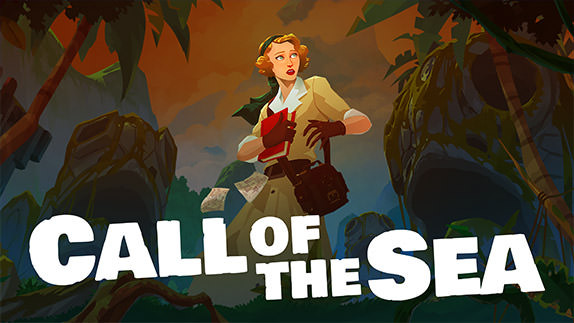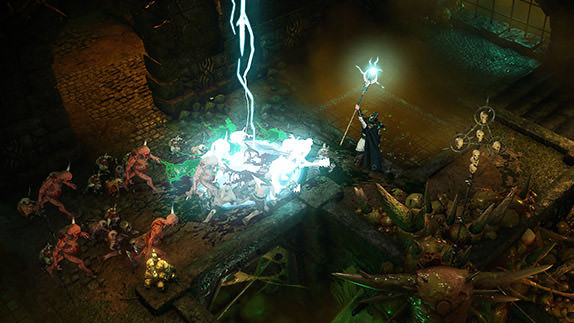Dying Light Review

 By Kevin Mitchell | Posted: February 3, 2015
By Kevin Mitchell | Posted: February 3, 2015
Techland is no slouch when it comes to action-packed zombie thrill rides, having their hands in the development of the original Dead Island and disappointing sequel Dead Island: Riptide. Using everything they learned from those titles, Dying Light looks to perfect the online experience, offering a blend of cooperative and asymmetrical competitive multiplayer.
Set in an apocalyptic, open-world, urban landscape in the fictional Middle East city of Harran, Dying Light literally drops players into the role of Kyle Crane, an undercover operative, in an overrun area of infected and in the middle of a war between human survivors. As it was in Dead Island, the game focuses heavily on melee fighting. Although, unlike Dead Island, fighting isn't the primary defense for players. Parkour and freerunning have been growing in popularity across the globe, and what better way to escape from the vicious undead than to hop across rooftops and shimmy up telephone poles.
Acting as a tutorial for all basic controls, the first mission will engrave in you to never stop running once you start. The game even employs a look-behind button, allowing you to awkwardly see pursuers. Speed is key to get around the clichéd, slow-moving zombies during the day as you'll want to avoid getting caught in the middle of hordes. Engaging with one or two will usually draw the attention of anything nearby, making it a normal occurrence to be overwhelmed. Although Crane admits he has no background in leaping off buildings, you'll have no issues as long as you are looking at what you want to grab. See a ledge above you, either walk, run, or stand still and jump towards it, but make sure to tilt the camera or Crane won't grab on. If only parkour was this simple in real life.
Mistakes are bound to happen, as I've leapt off and didn't scan the immediate area well enough and found myself dying in the middle of a street. Knowing that players will want to make the unbelievable escapes seen in almost all zombie movies, there are objects scattered around that act as a cushion for your landing. The roofs of cars, dumpsters, awnings, and piles of trash are some of the safe places to land on if you happen to take a leap of faith. Be warned though: you initially won't be able to move as Crane will fall and stagger to get to his feet. If you are on the ground, having zombies nearby could make things that much more exciting.
Facing off against the flesh-hungry undead is bound to happen, and Dying Light excels at the melee combat, tweaking gameplay from their previous titles. As you might expect, you'll be using many unconventional items like pipes, wrenches, planks of wood, all with varying stats. Every weapon is broken down into different categories that control how fast the weapon can be swung, damage output, and how long before the item will break. If the item breaks, you won't be able to repair it and essentially it becomes a wasted item slot. But before it breaks, you are given the chance to repair it to its former glory. Much like many popular MMOs and RPGs, items are divided by rarity from uncommon to legendary. The higher on the rarity scale, not only will the stats be higher than a common version, but the item will be less susceptible to breaking. New items can be crafted with elemental damage, or with an increase of stats. Infected should think twice before lunging at someone with an electrified pipe that can be swung at twice the normal speed.
Similar to the skill tree structure from other role-playing games, the upgrade system will ensure you keep up with the game's progressive difficulty. Depending on if you spend your time running away, leaping from buildings, or fighting against the infected, you'll earn points to spend in different skill trees. How you use them is up to you, but the dropkick has become a favorite of mine in the combat tree.
Firearms will be rare and the ammunition even rarer, but there is a greater risk at using anything that produces noise. Although during the day the streets are littered with the mindless undead, making noise, like using a firearm or blowing up propane tanks, attracts the deadly Runners. The safe feeling from hiding on top of a building will immediately sink as you see multiple zombies running towards you at great speed. These Runners are every bit as agile as you are, and when outnumbered, your best bet is to high tail it out of there and attempt to hide. Outrunning them is almost fruitless since they are bound to catch up to you, so stagger your directions and don't run in a straight line. One time after leaping to my death, I spawned at the nearest safe house, but as soon as I exited the area the Runners were still hunting me.
Dying Light also features a dynamic day/night cycle that will keep you on your toes when the sun starts to set. Although the day cycle will last for over an hour, the night cycle lasts for a fraction of that time. During the day is the best time to scavenge for supplies, set up traps, perform missions for various survivors and collect any hidden airdrops around the city. Once the sun goes down however, you best be searching for cover as the once absent-minded zombies have new, finely tuned senses; giving them the ability to sprint and climb around buildings. Traps will come in handy, especially if you need a distraction in order to make it to a nearby safe house. There is also a dynamic weather system, including rain, fog, and heavy wind, but it is far less common.
After completing the elongated prologue, which lasts roughly an hour, you'll unlock the ability to play cooperatively and have other players join your game. There are options to tailor your experience to keep it a single-player experience, friends only, or open to the public. The console versions are limited to voice chat for communication, but the PC versions also includes keyboard chat for those without a mic. The mini-map allows you to easily find players scattered around the city. If someone decides to start a mission, every player will be prompted to teleport to the necessary location. Occasionally an optional competitive objective will pop on screen, as players compete to kill as many enemies in a set time, collect the most loot and more. Quarantine Zones provide a steep challenge for those willing to face an unwieldy number of strong zombies. Unlike Dead Island, there is only a single protagonist meaning every character online will look roughly the same.
The default option for being invaded by a Night Hunter is set to nighttime, although you can change the setting to allow for invasions to occur all the time or turn it off completely. If a Night Hunter does enter the game world, the single-player progress for all players will stop and you'll be tasked with destroying zombie hunter nests. Night Hunters are player controlled, meaning you'll have to deal with an overly powerful unpredictable creature. At launch, most invasions have proved fruitless, as players haven't perfected how to utilize the strengths of the Night Hunter.
Simply Put
Although the similarities are easy to see, Dying Light is set in a darker, grittier, and more realistic world than the bright and colorful island from Dead Island. Combat lacks limb interaction, but still allows you to swipe legs with baseball bats or cave skulls in with heavy items. The game peaks when you are playing with a few friends, either completing missions, challenges or just roaming to uncover all the secrets of Harran. The mission structure leaves a lot to be desired, but throwing additional players into the mix keeps the game from feeling like a chore.
Note: Dying Light was reviewed on PC. A digital copy of the game was provided by the publisher/developer.




